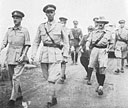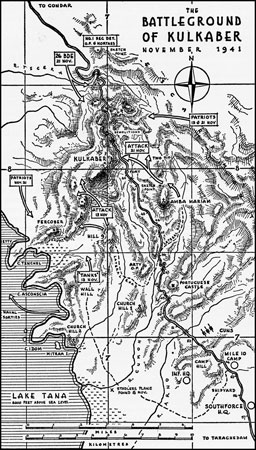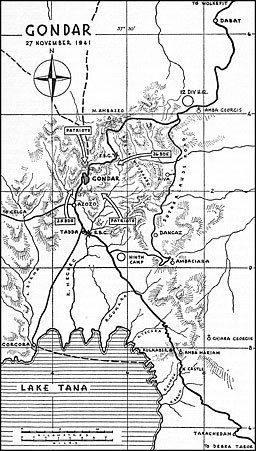
23
End of an Empire
With the occupation of Amba Alagi on 19 May, followed by the fall of Soddu on 22 May and East Africa Force's closing up on the Omo River at Abalti and Sciola by the end of the month, the Italians had passed the point of no return as regards any hope of military recovery in East Africa. The capture of Dessie had cut off in the Danakil country north of French Somaliland a force of some 2,800 Colonial troops under Colonel Raugei.1 West of Dessie, a column of about 14,000 under Colonel Maraventano had stubbornly trekked over extremely difficult country in an attempt to get back to Worro Ilu and then to Debra Sina. Reduced to about 7,000, they had finally surrendered on 22 May.2
In Migiurtinia--the northernmost tip of Italian Somaliland--a small British column from Aden undertook a march of 800 miles to clear isolated Italian garrisons, the last of which, Alula, was in its hands by 21 May.3 In the remote reaches some 350 miles north-east of Mogadishu, thirty vehicles from 107th R.M.T. Company, S.A. Indian and Malay Corps, carried men of the Northern Rhodesia Regiment to occupy Rocca Littorio.
Far to the west of the Galla-Sidamo, remote from the Battle of the Lakes and the main axes of 12th African Division's complementary advance up through Neghelli and Yavello, 25th East African Brigade had been ordered to move north from Kalam to occupy Maji and make contact with the Sudan Equatorial Corps and then hand over to them.4 Major Steven's 27th Road Construction Company, S.A.E.C. had built an all-weather road for 70 miles from Lodwar to Kalin and further north--in March--they had had to be supplied by air while cut off by rain during operational work across the Omo River near Lake Rudolf.
With this threat from the south and the general deterioration of the Italian position, General Caffaratti's 22nd Colonial Division had already begun to withdraw towards Maji when 2/3 King's African Rifles, supported by Captain de Marillac and Lieutenant Meeser's armoured cars of No. 1 S.A. Armoured Car Company and a section of South African Engineers, set out from Kalam on 8 April. Washa-Waha, 75 miles to the north, was reached next day but, with almost continuous downpours, 2/4 King's African Rifles only reached there three days later in vehicles of 'B' Section, 129th R.M.T. Company, Cape Corps.






